Looking for a house manager/nanny
We’re in the market for some help. If you fit the description below or know someone who does, please get in touch.
Busy Roscoe Village family seeks energetic, experienced, self-directed full-time house manager.
Individual should be a non-smoker, have own transportation and mobile device, and be comfortable with email, texting, and web-based services (e.g., classroom websites, school lunch ordering, activity registration) necessary to run this active family. Three children, ages 8, 11, and 13, are in school full-time M-F, but need after school care. Full-time working parents need help managing the house.
Flexibility to run errands, willingness to perform light housekeeping and organize small projects, and ability to maintain active extra-curricular schedules for the kids are a must. 40-45 hours/week, split between time with children (school dismisses 3p, most days) and time to help around the house and run errands.
Daily hours have flexible start time, and parents cover “morning shift” most days. Ability to work longer hours or overnight when both parents are traveling, or entire days (when school is out, or kids are sick) is optimal.
If you fit this description, are available immediately, and can provide strong references we look forward to hearing from you!
Spaceship! Spaceship! Spaceship!
A few notes on rebuilding my first LEGO set from 1979.
I set out to build the iconic, genre-defining LEGO Galaxy Explorer. I knew I had the original pieces as I have every brick I was ever given, bought, or bought for my own kids. There are tens of thousands of pieces in several bins full of 35 years of detritus that inadvertantly got mixed into the slurry. Batteries from the 1980’s (long since having leaked their acid), various mementos, trash, thumbtacks, model pieces, indecipherable bits of toys and games, sharp shards of pieces long since stepped-on and cracked. Finding the original bricks was part autobiographical archaeology, part that Russian Roulette scene with the log creature in Flash Gordon.
The LEGO Galaxy Explorer jumpstarted the “Classic” phase of space-themed brick sets. Before dueling factions, before space police, before aliens and whatever the hell Bionicle was, Classic Space was about exploration, period. It’s interesting to read the set as a kind of cultural document for the vision (perhaps a Danish vision) of what spaceflight was or could be in the late 70’s.
Apollo was over. Skylab had just plummeted back to Earth. Salyut 6 still orbited. And the Space Shuttle was in testing for its maiden voyage. Clearly the shuttle was an influence on the Galaxy Explorer: both have fixed wings and separate crew and cargo compartments. But exploring the design of the brick ship suggests that the new NASA orbiter was not its only inspiration.
The Galaxy Explorer is the threesome lovechild of a Space Shuttle, a dump truck and a Harrier jet. How else would you explain the loading ramp in the back which really only works in gravity where you can cart things up? Or that, without wheels, the ship clearly does not take off like a plane. The underside engines are obviously for vertical ascent. And if you got those, why do you need wings at all?
The answer is what makes LEGO such an incredible company: the design of the ship is as influenced by how human beings play with interlocking bricks as it is by actual spaceships. It’s the difference between LEGO and model kits. For one, kids play with LEGO bricks in an environment with gravity. They might fly the ship in their hand through the air, but actually interacting with it takes place on some surface, orbital mechanics be damned. This explains the loading ramp (kid drives LEGO car around on a surface and into the ship) and the vertical take off (kid grabs the ship and yanks it up), and even the wings (that’s how the kid holds it). It’s a very planet-based (or at least surface-based) view of space travel, because that’s how (and where) kids play.
Play as primary design driver is evident in an odd little locking piece that keeps the cargo bay doors from flying open. It is one of the rare instances I know of where a piece is added simply for convenience of real-world usage. The 1×2 flat blue piece has no aesthetic or functional value on the ship-as-ship, only for ship-as-plaything. Take that, fourth wall!

Then there’s the ornamental, gaudy and inexplicable: racing stripes (huh?), logos, vents, fuselage arrows (for ground crews?) and livery numbers. No decals, thankfully. The whole thing was driven by an actual circular steering wheel (something even airplanes don’t use). Maybe the ship never did leave the ground: the minifigs have visor-less helmets and zero protection from the (lack of) elements other than their spacesuits.
It’s the color scheme, though, that defines Classic Space for me. Gray base plates and horizontal surfaces, blue structural elements, translucent yellow windows. Toss in a few computer bricks (oh, the computer brick!), a radar dish, and some green and red see-through 1×3 cylinders — that aesthetic shaped my LEGO creations for the better part of a decade. (Green? There is no green in space.)
But there is yellow. As in yellowing pieces. Though I was fastidious in making sure I found ever single correct piece — never substituting or otherwise being clever — I obviously did not find all the original pieces. The slight yellowing (and relative state of cruft accumulation) on some of the bricks is a dead giveaway. I bet 30% of the ship is original. I kinda like it actually. The original Star Wars showed us how cool beaten-up, dusty and old space could be. My LEGO Galaxy Explorer wears the patina of time well.
If you’ve seen The LEGO Movie you have witnessed the legacy of the Explorer. The character Benny maniacally flies around yelling “Spaceship! Spaceship! Spaceship!” in a craft that is clearly inspired by the original set. It’s over-the-top, but retains the rough geometry, retro rockets, racing strips, and (maybe) the cargo bay. In a nod to dorks like me in the film, the actual spacesuited character is cracked and clearly worn through time.
Sometimes the future is nostalgia.
When tech culture and urbanism collide
The city is the most complex machine ever invented. Running optimally the city generates opportunity and provides a platform for interaction, ideas, and improvement. As a concept the city has been iterated-upon, smashed and burnt to the ground, rebuilt, deliberately-designed, haphazardly-organized, and generally resilient for many millennia. But the city is still a human invention and every single one is flawed, many horribly so.
Which makes cities the ultimate problem set. For the engineering-minded and entrepreneurial the challenge of cities has enticed since the first itinerant merchants decided that they were no longer itinerant. Cities for centuries have been the locus of commerce and the crucible of invention (often from necessity). Demographically, they are on a path to be called home to 70% of the world’s population by 2050. If you want a market — or are driven by the moral imperative of figuring out how to get that many people to live in relative harmony — cities are your platform.
And yet some of our most creative problem-solvers — entrepreneurs and technologists who invent the things that have changed our lives radically over the last decade — seem not to grasp what makes cities so dense with opportunity in the first place. There’s a disconnect between the culture of technology companies and what makes for smart urban policy.
Recently SPUR‘s Allison Arieff noted the ways that tech companies have enthusiastically co-opted the language of urbanism — “community”, “the commons”, “town halls”, etc — while not actually embracing any of what that means in the real world. “Why,” she asks, “are tech companies such bad urbanists?”
The answer is that suburbia is in the very DNA of Silicon Valley, which makes it part of the genome of tech culture writ large. Though many of the biggest companies in tech now are less than ten years old, Silicon Valley itself came to be during the boom of late-20th century car culture. (The garage itself is mythical in startup lore.) Anti-density land use, zoning laws that abet sprawl, work-life patterns fashioned around automobile commuting — these traits are as central to Silicon Valley as Stanford, libertarianism and foosball.
Tech headquarters in the Valley (and many other places) are built as simulacra of cities. Corporate campuses sport their own transit systems (some of which venture out into the city itself, altering socio-economics in their path), bike share systems, restaurants, and health clubs. Facebook’s HQ even has a faux downtown, something straight out of a 1980’s shopping mall design handbook. Unlike a mall, though, none of this is open to the public. While “community” may be the buzziest of words in tech parlance, this is community-as-facade, a highly engineered experience that still revolves around automobile commutes and forecloses true serendipity. It would be funny if it weren’t such a problem: For all their embrace of futurism, tech companies in the Valley are merely recapitulating the failures of a bygone age of suburbia.
And yet San Francisco is the preferred place to live for many of these employees. Which is great, except that their salaries — out of synch with the communities in which they live — generate an economic force that skews rents, forces evictions and creates class stratification driven almost entirely by corporations not located in the city. It’s the reverse of a bedroom community. Wealth drives people into cities while keeping the engines of that wealth outside the city.
But this is 2013, not 1960. Today’s tech companies are not stupid. They understand the benefits of the city from a business perspective. (Which is why Amazon, Twitter and Zappos are all building headquarters in the middle of cities.) It is where the talent lives, its many modes of transportation chime with companies’ commitment to the environment and employee health, and cities are very often the conceptual blueprint for social innovation on the web, as Arieff points out. But understanding the benefits of urban life and attempting to create them as self-contained units that simulate a city — as much of middle America did in the latter half of the 20th century with gated subdivisions, office parks, and shopping malls — are two very different things.
Which is more than odd; it’s contradictory. The web itself, fount of so much innovation in the tech world, is the network embodiment of density, diversity and proximity — precisely the characteristics of cities. The sidewalk was the original social network; the corner store the original just-in-time retailer; the town square the original blogging platform. Given this symbiosis one would think more of an effort would be made in tech circles to understand the precepts of urban design.
——
So how do we change this? What might we do to set the sights of our smartest technologists towards sustainable urban design?
A start would be to remind tech companies of one of their core principles: user-centered design. Understanding city life means living city life. Not just commuting to it or from it and certainly not believing you understand a person’s situation just because you pass him or her on the street from time to time. The best products are those that begin with a user’s motivation and needs. They are empathetic applications. To crack the nut of urban-scale opportunity — and there is a lot of it, just look at the “sharing economy” successes of Uber, Airbnb, and Zipcar — technology must be built amidst the same forces that create the problems it is trying to solve.
And those problems must be meaningful and relevant to cities, per se. Nine times out of ten the first image in an ad or a presentation on the subject of smart cities will be of a traffic jam — as if congestion were the number one problem facing the city. It’s a very suburban view of what an urban problem is.
Is the self-driving car really what our rapidly-urbanizing world needs? Every single one of our ballooning population in their own hermetic cocoons? That too is a suburban view of the problem, a moonshot to an uninhabitable moon.
Vibrant, safe public spaces; shared, multimodal streets; exemplary education systems that propel people from early childhood through post-secondary; affordable housing — these are the issues that make or break cities. Or, put another way, these are the problems worth solving because they are worth a lot. Yes, in economic terms. Venture capital is all about risk and return. That risk (and potential incredible reward) is splayed out in every city in America.
To read certain of the screeds against the city (and responses to Arieff’s column) you’d think no entrepreneur or developer was having any success tackling urban opportunities. But that’s simply not true. We can build upon the success of the work being done at the intersection of technology and urban design, right now.
For one, the whole realm of social enterprise — for-profit startups that seek to solve real social problems — has a huge overlap with urban issues. Impact Engine in Chicago, for instance, is an accelerator squarely focused on meaningful change and profitable businesses. One of their companies, Civic Artworks, has set as its goal rebalancing the community planning process.
The Code for America Accelerator and Tumml, both located in San Francisco, morph the concept of social innovation into civic/urban innovation. The companies nurtured by CfA and Tumml are filled with technologists and urbanists working together to create profitable businesses. Like WorkHands, a kind of LinkedIn for blue collar trades. Would something like this work outside a city? Maybe. Are its effects outsized and scale-ready in a city? Absolutely. That’s the opportunity in urban innovation.
Scale is what powers the sharing economy and it thrives because of the density and proximity of cities. In fact, shared resources at critical density is one of the only good definitions for what a city is. It’s natural that entrepreneurs have overlaid technology on this basic fact of urban life to amplify its effects. Would TaskRabbit, Hailo or LiquidSpace exist in suburbia? Probably, but their effects would be minuscule and investors would get restless. The city in this regard is the platform upon which sharing economy companies prosper. More importantly, companies like this change the way the city is used. It’s not urban planning, but it is urban (re)design and it makes a difference.
A twist that many in the tech sector who complain about cities often miss is that change in a city is not the same thing as change in city government. Obviously they are deeply intertwined; change is mighty hard when it is done at cross-purposes with government leadership. But it happens all the time. Non-government actors — foundations, non-profits, architecture and urban planning firms, real estate developers, construction companies — contribute massively to the shape and health of our cities.
Often this contribution is powered through policies of open data publication by municipal governments. Open data is the raw material of a city, the vital signs of what has happened there, what is happening right now, and the deep pool of patterns for what might happen next.
Kicked off by data.gov and data.gov.uk, the open data movement has been replicated in most major Western cities. There’s no doubt this data has been put to good use by people and organizations outside of government. Chicago’s ecosystem of “civic hackers”, for instance, is unparalleled, generating hundreds of applications and analyses that make the lives of Chicagoans better. School data, lobbyist data, foreclosure, zoning and land use data, health atlases, snowplow-tracking data, real-time transit data, incarceration data, food-borne illness data — all these sets have been usefully translated into applications that change the way the city is used.
Tech entrepreneurs would do well to look at the organizations and companies capitalizing on this data as the real change agents, not government itself. Even the data in many cases is generated outside government. Citizens often do the most interesting data-gathering, with tools like LocalData. The most exciting thing happening at the intersection of technology and cities today — what really makes them “smart” — is what is happening at the periphery of city government. It’s easy to belly-ache about government and certainly there are administrations that to do not make data public (or shut it down), but tech companies who are truly interested in city change should know that there are plenty of examples of how to start up and do it.
And yet, the somewhat staid world of architecture and urban-scale design presents the most opportunity to a tech community interested in real urban change. While technology obviously plays a role in urban planning — 3D visual design tools like Revit and mapping services like ArcGIS are foundational for all modern firms — data analytics as a serious input to design matters has only been used in specialized (mostly energy efficiency) scenarios. Where are the predictive analytics, the holistic models, the software-as-a-service providers for the brave new world of urban informatics and The Internet of Things? Technologists, it’s our move.
Something’s amiss When some city governments — rarely the vanguard in technological innovation — have more sophisticated tools for data-driven decision-making than the private sector firms who design the city. But some understand the opportunity. Vannevar Technology is working on it, as is Synthicity. There’s plenty of room for the most positive aspects of tech culture to remake the profession of urban planning itself. (Look to NYU’s Center for Urban Science and Progress and the University of Chicago’s Urban Center for Computation and Data for leadership in this space.)
And what about the built things themselves, actual physical architecture? Where is the technology that causes us to rethink our domiciles and places of work, recreation and worship in the ways we’ve remade communications, mobility, and manufacturing in the last decade? Where are the tools that make urban districts as responsive to changing uses as metal and glass have been made malleable by 3D design tools? Where, to put it most like a William Gibson novel, is the “architecture that flickers and buzzes like faulty neon, that is washed with intermittent static like a weak video signal”?
Architect Doris Sung, for example, has begun experimenting with materials that change shape based on external stimuli, much like human skin. And it’s not just materials science, but high technology as well: the increasing instrumentation of cities with sensors and actuators creates a literal platform for designing new experiences. This is what technology startups in particular are good at.
——
Scientists have a term called “positive suboptimality” which refers to the resilience of systems which are not specialized for a particular use (or which at least weather changes in external conditions without breaking). Most often this concept is used to describe how nature has evolved not with the fittest organisms but with those fit enough to survive changing conditions. Super-specialization means extinction.
It’s a concept that could usefully be applied to cities. Precisely the way cities fall short of perfection is what gives them resilience and opens up opportunity where none previously existed. What appears broken and yet persists in cities may simply be evidence of fault-tolerance, something all technologists strive for with their products.
Molly Turner nails why this so rubs some technologists the wrong way:
[T]ech innovators also like to work on a tabula raza, void of constraints, preconceived obstacles or even the benefit of institutional knowledge. And while sometimes that leads to genius strokes of ingenuity, other times it means unknowingly repeating mistakes of our urbanist past, such as becoming overly reliant on the wisdom of the crowd or failing to account for important social or cultural divides.
Understanding how cities bend but don’t break, understanding how they do indeed break, and understanding how much of where we live influences the solutions we try to fit to problems are the greatest lessons that tech can take from urbanism.
City officials are often asked “how do you turn this place into the next Silicon Valley”? Most smart folks in economic development answer by saying that they don’t want to. They want their city to capitalize on its own legacy, assets, work ethic and skills. For many years that statement was just politicking and boosterism. But it isn’t anymore. Cities are where the problems exist and where the talent is moving. It’s easy to see how this equation sums and time for tech culture to do the math.
Did a panelist just say bestiality?
So, the panel I moderated at SXSW went exceedingly well. That’s what happens when you stack the deck with smart, witty, quotable peeps. I was honored to be up there with them.
We projected the #sxswbeast feed for the audience in real time to get a sense of the mood and questions. In lieu of the podcast of the talk (which has not yet been posted) you can thumb through the feed and get a pretty damn good idea of the meat of the talk. The Hive Mind as Cliffs Notes.
Here’s a Wordle cloud of all the tweets that came in. Click for larger. (Find the suppository!)
In another vein is this visualization from Social Collider. It shows lateral connections between Twitter conversations. The vortex at the middle represents all the different audience conversations happening during the talk. But the interesting bits are the lines that shoot out to the left and right, like the rings of Saturn. These represent similarities to other tweets taking place at the same time. Most are from SXSW itself so the graph is, in a way, a snapshot of thematic resonance at the conference between sessions. The more horizontal the line, the more simultaneous the discussion.
Here’s the visualization. Click for larger.
Slightly humorous is that one of the tweets was about the book Orbiting the Giant Hairball — a classic on the topic of corporate entrepreneurship. Hairball indeed!
Skip St. John
Well, look who has a blog.
My brother has claimed his own parcel of the web (MySpace don’t count, sorry Joey). I look forward to redirecting all our conversation with one another to comments and trackbacks between our sites.
Enjoy: www.skipstjohn.com.
(Clearly the blog title is an affectionate homage to me. Brotherly hagiography, if you will.)
Sooty pretty things
Fall decided to arrive, aggressively, while I was gone. That means a few things: making fires, making booze, and making a plan for our annual holiday party. All of these take the chill off the city’s mad dash to winter.
We had our chimneys swept today for the first time since 2002. I had hoped for a small, sooty Gamfield who’d hoist himself onto the roof and into the chimney Santa-style. Alas, even your most cherished 19th century images of child labor have been superseded by technology. Basically a couple of very clean guys shove a cross between a pipe cleaner and a vacuum cleaner up the flue, turn on a machine, and stand back. Apparently our downstairs chimney looked like an emphysemic lung.
For those of you interested in what I finally did about procuring firewood, it turns out that both companies we called in Chicago adamantly do not take down live trees for their stock. Basically they both said they follow loggers around and take the tops off the trees that they leave for dead. Both thought my wife was nuts for asking for an all-elm cord and offered up a window into their supply process when she explained why. A good lesson for us in the upside of simply asking.
‘Tis also the season for things frightening, such as a five-year-old’s birthday party on Halloween. But really it means a great excuse to catch up on a backlog of horror flicks. My love of the genre has recently taken a sidetrip into the small world of sci-fi/horror video games. I had read great things about EA’s Dead Space, a first-person shooter set on a derelict spaceship and filled with all manner of nasties. Now, even though I’ve been deeply immersed in virtual worlds (direct descendants of 3D video games) I have never actually owned a game like this.

Truth is, it is scary and all for the reasons that the best horror films are. It is about what you don’t see, what you do hear, and what you think might be around that next corner. I have little to compare it to in the game genre, but as an exercise in finally being able to get the imperiled protagonist to run from the monster when you know they should, it has been very enjoyable. (Not at all kid-friendly, I might add. A few minutes of them watching me and my wife was contemplating therapist appointments for us all.)
More on this year’s batch of hooch and party prep soon …
A chosen few

Preparations for next year’s South by Southwest festival are underway and the panel picker is live. If you love me you’ll take a moment and vote for the two panel proposals that I’ve had a hand in.
The panel picker is a way of giving voice to the community at large about what the actual lineup of speakers should be. It isn’t wholly a popularity contest as the editorial board and staff have a hand in what finally gets selected, but feedback via the picker is a large part of it.
So here they are.
The Street is a Platform
Cities abound in data generated by their inhabitants (virtual worlds, city websites, online media) and created automatically by systems or monitoring. How does this online manifestation of the city interact in tangible ways with urban design and informal urban constructs? Is there such a thing as “the street as platform”?
This is a joint proposal with the inimitable Andrew Huff. And credit where it is due: this topic is almost wholly informed by this amazing post by Dan Hill.
Entrepreneurship in the Belly of the Beast
Small is beautiful at SXSW. From Getting Real to starting up, the ethos is largely anti-large corporation. This attitude overlooks one of the most satisfying professional accomplishments: doing your own thing while working for The Man. This presentation uses examples to offer strategies for making the corporation work for you.
Subtitle: Why Working for a Gigantic Company Isn’t As Bad As SXSW Would Have You Believe. This is my first (possibly last) submission for a solo “panel”. Just me on stage, a single target for the barbed arrows of the audience.
You do have to create an account to vote, but that’s not much to ask for a lifetime of my eternal gratitude, a firm handshake, possible hug, and sip of my drink next time we meet, is it?
The Gigglesnort Hotel
In the ongoing quest to analyze my youth for clues to explain why I am the way I am, I think I’ve hit the motherlode.
The Gigglesnort Hotel was a children’s show of which I have only the vaguest memories, but they’re all dark. Which is odd for a kid show, no?
Gigglesnort is a cherished memory of anyone who grew up in the 70’s in Chicago. It was produced locally and its creator and lone human actor was Bill Jackson, something of an icon in Children’s TV here. But damn was it creepy. It was all puppets and, looking back on them now, I’m not surprised I think of it more in fear than in joy. Chucky would have been right at home in Jackson’s entourage.
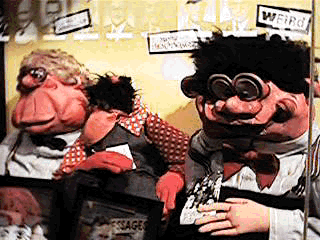
The hotel was run by a senile admiral who stayed in the attic and thought the inn was a ship. He’d steer it at a captain’s wheel and request reports on the crew. A dragon — Dirty Dragon by name — ran the boiler in the basement, spewed smoke from his nose and was generally mean. I think he was also the mail man. There was a hotel employee named Weird who was exactly such, looking vaguely mentally addled (pictured above).
But the strangest character was a lump of clay named Blob that “spoke” in grunts and wheezes and basically sounded like a drunk old man. He was constantly being manhandled into new forms by BJ the clerk.

I suppose it all balances out with the Superfriends and The Bozo Show, but when I think about what I was watching in the 70’s — Land of the Lost, Son of Svengoolie, and Gigglesnort Hotel — I do wonder if my current viewing tastes would be, you know, less macabre.
Only one way to find out I guess. Gotta buy some Gigglesnort DVD’s and choose a control group from the kids.
Necessary feeding
Recently my subscription to Daring Fireball lapsed and it took me a day or two to realize that Gruber was not on vacation but that my feed had stopped. Sucked. Made me grumpy. Misanthropic, even.
So I figured now was a good time to comb through the ol’ reader and highlight those feeds that I can’t do without. I’m subscribed to hundreds of sites, but there are a few that give a moment of pleasure in simply seeing the new entry indicator in bold. Some of these are obvious and well-known, others perhaps not. Have a look at the one’s you don’t know.
Daily
Coudal Partners
Daring Fireball
Gapers Block
ISO50
kottke.org
Mark Bernstein
Not-so-daily, but just as satisfying
fueled by coffee dot com
microscopiq
PointAwayFromFace
Roo Reynolds
stevenberlinjohnson.com
wayne&wax
It’s interesting to think about what’s common about these sites. True, I know the authors of 7 of 12 of the blogs, but that’s not really an explanation. It’s that I feel a connection to all these sites in ways other than just being a reader.
For instance, I’m a huge fan of the music of Tycho (ISO50). I have eminent respect for the scholarship of Wayne Marshall (wayne&wax). Gruber (Daring Fireball) is a close friend of Jim Coudal’s; that’s a degree of separation that makes him almost a pal. And so on.
I’m sure there’ll be a blog one day from someone I have no other connection with, but right now it’s all about personal affinity. A kind of social networking informs my own reading habits, you could say.
Should I be following your site? Let me know.
Retrograde
I was shuffling files around recently and came across an archive of my first personal website. It wasn’t Ascent Stage, but a site called hypertext :: renaissance (you see, the lowercase and double-colon were edgy) that I built when I was in graduate school in 1996.
Click for annotations and prepare to mock.


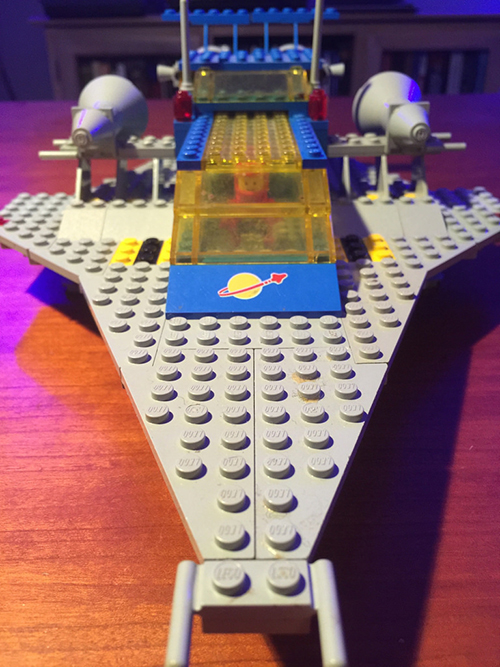
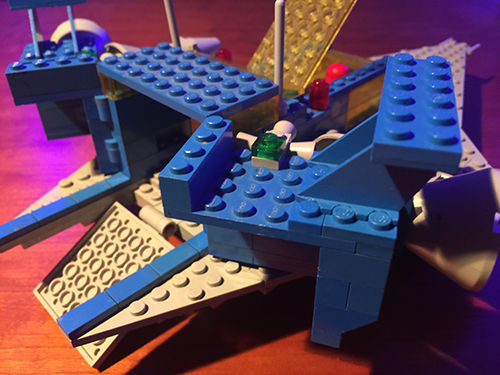
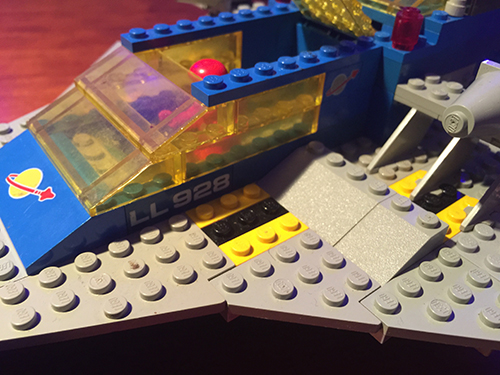
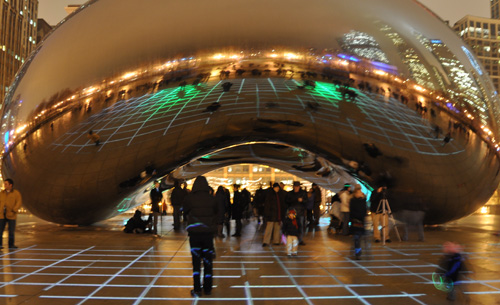
.jpg)












